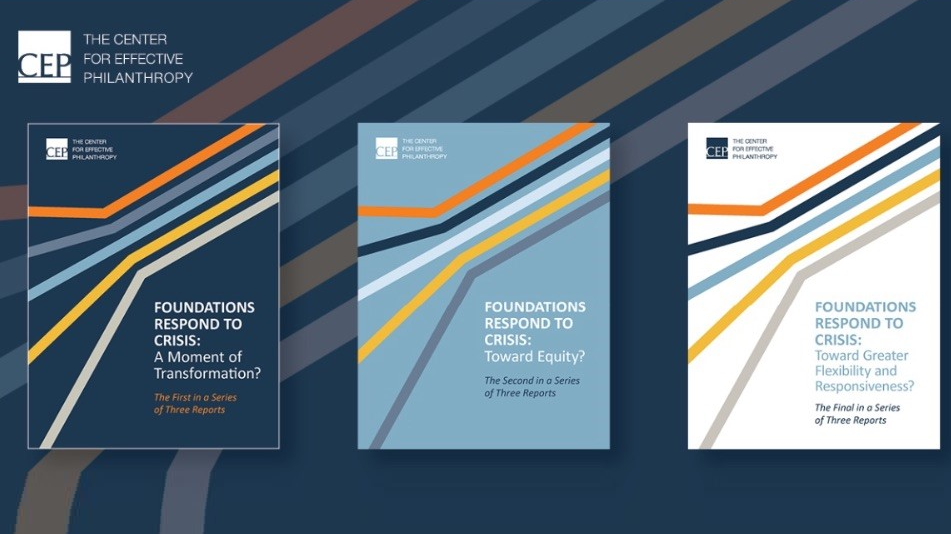Foundations Respond to Crisis: A Must-Read Research Series from CEP

This article was originally published by The Center for Effective Philanthropy and is re-posted here with permission.
In early spring, as the COVID-19 pandemic worsened, foundations in the U.S. began to shift resources and practices. Some funders, nonprofits, and others in the field called for fundamental changes in how funders approach their work — including upping the provision of long-term, flexible funding; shifting the funder–grantee power dynamic; placing greater trust in nonprofits; and increasing foundation payout.
The pandemic has exacerbated long-standing structural inequities — especially in Black, Latino, Native American, low-income and working-class communities, and for people with disabilities. As such, foundations have also been called on to invest in communities hit hardest by the public health and economic consequences of the pandemic, and to integrate racial equity more comprehensively into their work.
Given these calls, what’s actually changing in foundations’ practices? And what does this mean for the future? CEP explored these questions through surveying and interviewing U.S. foundation leaders. Foundations Respond to Crisis, a new three-part research series from CEP, shares what was learned.
A Moment of Transformation?
The crises of 2020 have catalyzed foundation leaders to reconsider their choices about how they conduct their work, the first report in the series finds. They hope foundations will continue to build on the changes they are making rather than return to ways of the past. CEP Director, Research, Naomi Orensten discusses the key findings here.
Toward Equity?
The second report finds that almost all foundations report placing new, or more, focus on supporting Black, Latino, and lower-income communities. Most foundation leaders also say they are reckoning with racism and paying greater attention to racial equity in their work, but significant opportunities for further progress remain, and time will tell how deep or sustained this new focus will be. CEP Vice President, Research, Ellie Buteau, discusses the key findings here.
Toward Greater Flexibility and Responsiveness?
As the third report finds, foundations are changing to be more flexible and responsive in light of 2020’s events. They are loosening grant restrictions, providing more unrestricted funding, and reducing what they ask of grantees. Many plan to continue these practices in the future, though to a lesser degree than during their pandemic response. Orensten discusses the key findings here.
Findings in this research are based on survey data gathered from 236 foundations — 170 of which signed the pledge hosted by the Council on Foundations to act urgently in response to COVID-19, and 66 of which had not — as well as in-depth interviews with leaders of 41 foundations that signed the pledge. (All data was collected between June and August 2020.)
The Ford Foundation provided funding to support this research, along with Charles and Lynn Schusterman Family Foundation, David and Lucile Packard Foundation, Raikes Foundation, Weingart Foundation, and the William and Flora Hewlett Foundation.
The Center for Effective Philanthropy is a nonprofit organization focused on the development of data and insight to enable higher-performing funders.
The views and opinions expressed in individual blog posts are those of the author(s) and do not necessarily reflect the official policy or position of the National Center for Family Philanthropy.
